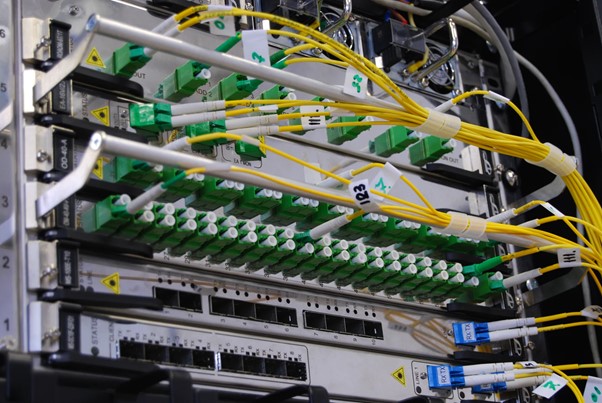Coutact Us
Whatsapp:+8618075108880
Email:info@ec-fibercable.com
Time:2023-03-09 16:47:10
Indoor fiber optic lines are used in various settings, such as data centers, offices, and homes. They are known for their high bandwidth and low signal attenuation. However, indoor fiber optic lines can experience faults that can cause disruptions in communication. In this article, we will discuss some of the common faults and reasons for indoor optical fiber lines.

Fiber Breakage
Fiber breakage is a common fault in fiber optic lines. It occurs when the fiber optic cable is physically damaged, causing a break in the fiber optic strand. Fiber breakage can be caused by a variety of factors such as excessive bending or pulling of the cable, physical impact, or improper installation. Fiber breakage can cause a complete loss of communication or a decrease in the signal strength.
Connector Issues
Connectors are used to join fiber optic cables together. Connector issues can occur when there is a problem with the connector, such as a loose or dirty connector. Connector issues can cause a decrease in the signal strength or a complete loss of communication.
Fiber Misalignment
Fiber misalignment occurs when the fiber optic strands are not properly aligned. This can occur during installation or due to physical stress. Fiber misalignment can cause a decrease in signal strength or a complete loss of communication.
Attenuation
Attenuation is a reduction in the strength of the signal as it travels through the fiber optic cable. Attenuation can be caused by a variety of factors such as fiber optic cable length, the quality of the cable, or the quality of the connectors. Attenuation can cause a decrease in the signal strength, resulting in a loss of communication.
Dispersion
Dispersion is the spreading out of the signal as it travels through the fiber optic cable. Dispersion can be caused by a variety of factors such as the quality of the fiber optic cable or the length of the cable. Dispersion can cause a decrease in the signal strength, resulting in a loss of communication.
Environmental Factors
Environmental factors such as temperature changes, humidity, and dust can cause faults in indoor fiber optic lines. Temperature changes can cause the fiber optic cable to expand or contract, which can cause stress on the cable. Humidity can cause moisture to accumulate in the cable, which can cause a decrease in signal strength or a complete loss of communication. Dust can accumulate in the cable, which can cause attenuation or fiber breakage.
Improper Installation
Improper installation can cause faults in indoor fiber optic lines. Improper installation can include issues such as excessive bending or pulling of the cable, improper termination of the cable, or inadequate protection of the cable. Improper installation can cause fiber breakage, fiber misalignment, or attenuation.
Mechanical Stress
Mechanical stress can cause faults in indoor fiber optic lines. Mechanical stress can be caused by a variety of factors such as excessive bending or pulling of the cable, improper installation, or physical impact. Mechanical stress can cause fiber breakage or fiber misalignment.
Chemical Exposure
Chemical exposure can cause faults in indoor fiber optic lines. Chemical exposure can occur when the fiber optic cable is exposed to chemicals such as cleaning solvents or industrial chemicals. Chemical exposure can cause a decrease in the signal strength or a complete loss of communication.
In conclusion, indoor fiber optic lines can experience faults that can cause disruptions in communication. These faults can be caused by a variety of factors such as fiber breakage, connector issues, fiber misalignment, attenuation, dispersion, environmental factors, improper installation, mechanical stress, and chemical exposure. It is important to take proper measures to protect indoor fiber optic lines from these factors to ensure optimal performance and minimize the risk of faults.